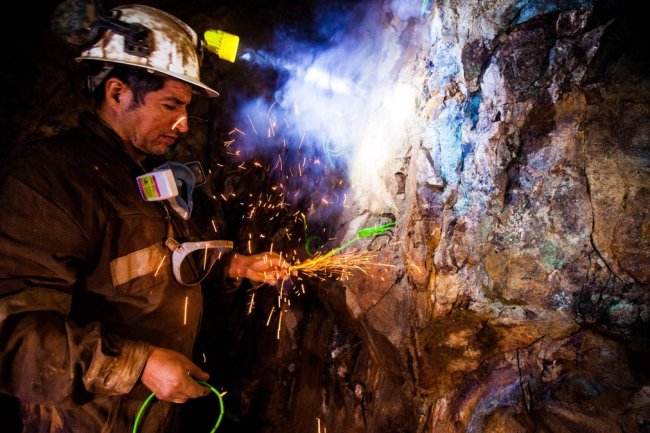Destructive Alberta tornado stronger than 95% that touch down in Canada, researcher says
Alberta woman's home 'completely gone' after tornado20 hours agoDuration 3:19Elisa Humphreys had her home and property destroyed by a tornado that touched down between the towns of Carstairs and Didsbury, Alta., on Saturday. She tells CBC News about fleeing the tornado and being overwhelmed by the outpouring of support she has received from her community.Crews are working to determine the intensity of the tornado that touched down north of Calgary on Saturday, destroying a handful of homes and damaging others. Environment and Climate Change Canada said the twister tore a path of destruction Saturday afternoon between the towns of Carstairs and Didsbury.Officials vary in their estimate of homes damaged, ranging from nine to 14, with a handful completely flattened. No one was seriously hurt in the storm, although a woman was found trapped in her basement after the tornado destroyed her house as she was beneath it.On Monday, the Northern Tornadoes Project surveyed the damage. It's a Weste

Crews are working to determine the intensity of the tornado that touched down north of Calgary on Saturday, destroying a handful of homes and damaging others.
Environment and Climate Change Canada said the twister tore a path of destruction Saturday afternoon between the towns of Carstairs and Didsbury.
Officials vary in their estimate of homes damaged, ranging from nine to 14, with a handful completely flattened. No one was seriously hurt in the storm, although a woman was found trapped in her basement after the tornado destroyed her house as she was beneath it.
On Monday, the Northern Tornadoes Project surveyed the damage. It's a Western University unit focused on understanding tornadoes in Canada.
LISTEN | Tornado researcher Connell Miller speaks on the Calgary Eyeopener:

Based on what he's seen on the ground, Miller said the weekend tornado was likely more powerful than EF-2, categorized on the enhanced Fujita scale by wind speeds of 178 to 217 km/h.
According to Miller, roughly 95 per cent of tornadoes that touch down in Canada are rated EF-2 or less. He described these as "less severe," although they are still powerful enough to topple trees or blow off a home's roof.
The tornado that tore through Mountain View County on Saturday was more powerful than these, according to Miller.
"This tornado will definitely fall within that five per cent of tornadoes that are stronger than [EF-2]," he said. "Just where exactly that will fall is still to be determined."
Miller, an engineering researcher, says his team determines the strength of a tornado by looking at the structure of the homes destroyed and figuring out how powerful the winds would need to be to topple the buildings.
Miller said his team will likely have a rating for the tornado by Tuesday morning. Should it be rated an EF-3, that would mean the winds were between 218 and 266 km/h. If an EF-4, the winds would have ranged between 267 and 322 km/h.
One of the houses destroyed in the storm belonged to Elisa Humphreys. She fled with her dog and cat just moments before her home was blown to pieces. She described the wreckage as looking like an airplane crash.
"What it is, is the total destruction of two homes that have just been shredded and spread everywhere," she said.
Dozens of people in the local community have turned out over the past few days to help clean up the debris, which included machinery that was thrown from one property to another and large trees uprooted and downed.
Lance Douglas, of Olds, helped organize the ongoing cleanup efforts. He was driving home from Calgary with this son on Saturday when they saw the tornado's aftermath.
"We were driving by on the highway and saw the devastation," he said. "We knew the Alberta way is that you just go and help."
Douglas helped start a Facebook group to organize cleanup efforts, reaching out to the property owners to understand their needs and if they wanted volunteers on their land.
"Everyone's really happy to have volunteers that are coming out and helping, even those that didn't [initially] want people on their farm further contacted us, and we've been able to send volunteers there, trucks and tools," Douglas said.
A barbecue on Monday was held to show appreciation to the volunteers. Over the next few days, Douglas said, their efforts will be focused on moving gathered debris to the dump and bringing in large machinery to removed downed trees.
"There's still miles of work yet to do," he said.
Tornadoes in Canada
According to Miller, one of the reasons the Northern Tornadoes Project was founded was to get a better sense of the tornado climatology in Canada.
The reason the official figure is low, Miller said, is likely a matter of population density. Every year, a number of tornadoes touch down in areas where no one lives — and therefore aren't reported.
"Since we've been founded in 2017, we've found that that [tornado] average is closer to 100 to 120 per year," Miller said.

Terri Lang, a Saskatoon-based meteorologist with Environment Canada, said the tornado came out of a supercell thunderstorm.
"Supercell thunderstorms are the types of thunderstorms that form in very specific conditions," she said. "These storms form their own environment, and they can last a very, very long time. They kind of feed on themselves, and they can travel hundreds of kilometres, producing all types of severe weather."
Saturday's intense heat was a factor — such warmth is required to produce a supercell. But for the formation of a tornado, the key factor is wind shear, with wind changing direction and/or speed over a short distance.
"That allows the storm to spin," Lang said. "Once the storm is spinning, it's capable of producing a tornado."
What's Your Reaction?
























